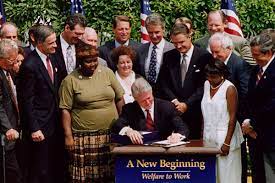Did you know that the first welfare program in America predates the Social Security Act of 1935? As you ponder the origins of social support in the United States, the early initiatives that laid the groundwork for modern welfare systems come into focus. Delving into the history of public welfare reveals a complex tapestry of local, state, and federal efforts to provide assistance to those in need. Stay tuned to uncover the intriguing story behind the inception of the initial welfare program and its influence on subsequent social welfare policies.
Early Local Welfare Initiatives
During the late 19th and early 20th centuries, local governments and private organizations collaborated to initiate public assistance programs aimed at addressing social welfare needs in communities across America. These early local welfare initiatives were crucial in providing community aid and relief efforts to those in need. Grassroots support played a significant role in the success of these programs, with neighbors coming together to help one another during challenging times.
Local welfare programs focused on providing basic necessities such as food, shelter, and clothing to individuals and families facing hardships. Private organizations, often rooted in religious or charitable missions, worked alongside local governments to ensure that vulnerable members of society received the necessary support. These early assistance programs laid the foundation for the development of more structured and comprehensive welfare systems in the years to come.
The emphasis on community aid and grassroots involvement in these early initiatives reflected a deep-seated commitment to social solidarity and collective responsibility for the well-being of all members of society.
State Relief Programs Pre-1930s
The groundwork for formalized public welfare assistance in America was laid through the collaboration between local governments and private organizations in the late 19th and early 20th centuries, setting the stage for the emergence of state relief programs pre-1930s. Before the 1900s, local initiatives and private organizations took on public assistance responsibilities. By 1926, forty states had established relief efforts for mothers with dependent children and old-age pensions for the elderly. However, the Great Depression caused the collapse of many state relief programs, leading to the need for new solutions. In 1932, the Emergency Relief and Construction Act provided loans to states for relief efforts, marking a shift towards more structured state programs. This laid the foundation for the significant developments in public welfare that followed, including the New Deal initiatives and the establishment of various state programs aimed at providing assistance to those in need. Public welfare was beginning to take shape as a crucial aspect of societal support and aid.
Emergency Relief and Construction Act
Establishing a pivotal shift towards more structured relief efforts, the Emergency Relief and Construction Act of 1932 played a crucial role in addressing the challenges brought about by the Great Depression. During its formation process, the Act aimed to provide immediate relief initiatives to individuals and states grappling with the economic turmoil of the era. State participation was a key aspect, as states had the choice to engage in the welfare programs facilitated by this Act. To ensure smooth operations, the federal government covered 50% of administrative costs, reducing the financial burden on participating states. Eligibility requirements were put in place, requiring applicants to demonstrate their need for assistance by proving income/assets below a certain threshold. By establishing these guidelines and fostering state involvement, the Emergency Relief and Construction Act laid the groundwork for more comprehensive welfare policies that would follow.
Federal Emergency Relief Act of 1933
Amidst the economic challenges of the Great Depression, the Federal Emergency Relief Act of 1933 swiftly intervened to provide crucial support and assistance to individuals and states in need. This pivotal legislation marked a significant step in the formation process of the American welfare system. Here are some key aspects to consider:
- The Act aimed to provide immediate relief efforts through federal grants to states.
- It prioritized public assistance by offering aid to those most affected by the economic downturn.
- The Act laid the groundwork for future social insurance programs by acknowledging the importance of long-term financial security.
- Federal grants allocated under the Act played a vital role in stabilizing state economies and supporting vulnerable populations.
- The Federal Emergency Relief Act of 1933 set a precedent for federal involvement in welfare initiatives, emphasizing the government’s responsibility in providing assistance during times of crisis.
Landmark Social Security Act of 1935
Upon enacting the Landmark Social Security Act of 1935, significant changes were implemented in the American welfare system, reshaping the landscape of social protections for generations to come. The Social Security Act had a profound impact on economic security, introducing social insurance on a national level as part of the New Deal reforms. This legislation marked a pivotal moment in welfare history, establishing a system of benefits that provided a safety net for individuals facing old age, unemployment, and other challenges. The Act laid the foundation for future welfare legislation, setting a precedent for the expansion of social protections and government involvement in ensuring the well-being of its citizens.
| Key Aspects | Description | Impact |
|---|---|---|
| Social Security Impact | Introduced social insurance nationwide, offering protections for various risks | Provided economic security to vulnerable populations |
| New Deal Reforms | Aligned with President Roosevelt’s agenda to address the Great Depression | Focused on improving social welfare through government intervention |
| Economic Security | Aimed to provide stability and support for individuals in times of need | Strengthened the social safety net for Americans |
Committee on Economic Security Formation
As we shift our focus to the formation of the Committee on Economic Security, it marks a crucial juncture in the historical evolution of American welfare programs, particularly following the enactment of the Landmark Social Security Act of 1935. The Committee’s formation under the Roosevelt administration brought about significant changes in public welfare, emphasizing economic security and social insurance. Here are some key points to consider:
- The Committee on Economic Security was established through an Executive Order in 1934.
- Headed by Secretary of Labor Frances Perkins, the Committee played a vital role in developing a social insurance system.
- Its final report, submitted in January 1935, laid the groundwork for the creation of the Social Security Act.
- This Act, based on the Committee’s recommendations, reshaped public welfare by introducing various social insurance programs.
- Recognizing the need for fundamental reforms, the Roosevelt administration set the stage for a more comprehensive approach to public welfare.
Evolution of Federal-State Welfare Programs
The evolution of federal-state welfare programs has been intricately intertwined with the shifting landscape of social policy in America. Federal-state collaboration has been crucial in shaping welfare program evolution, allowing for state flexibility while aiming for program effectiveness. This partnership has led to various policy implications, impacting the delivery of social services to those in need.
| Federal-State Collaboration | Welfare Program Evolution | Policy Implications |
|---|---|---|
| Shared funding responsibilities | Program diversification and expansion | Altered eligibility criteria |
| Policy standardization | Enhanced program monitoring | Improved data collection |
| Joint decision-making processes | Technology integration | Increased accountability |
| Resource pooling | Outcome-driven initiatives | Enhanced program evaluation |
This collaboration has not only enhanced the effectiveness of welfare programs but also paved the way for a more responsive and adaptive system that can address the evolving needs of society. The evolution of federal-state welfare programs highlights the importance of dynamic policy frameworks that can balance national standards with state-level customization to ensure the best outcomes for those relying on these essential services.
Medicaid Expansion in 1965
Federal-state collaboration in welfare programs has significantly shaped the landscape of social policy in America, leading to pivotal moments such as the Medicaid Expansion in 1965. The expansion of Medicaid in 1965 marked a transformative shift in healthcare coverage and access for millions of Americans. Key aspects of the Medicaid Expansion in 1965 include:
- Healthcare Coverage: Medicaid expansion aimed to provide healthcare coverage to low-income individuals and families who previously lacked access to adequate medical services.
- Eligibility Requirements: The program set specific eligibility requirements based on income levels and other criteria to ensure that those most in need could benefit from the expansion.
- Federal-State Partnership: Medicaid’s implementation involved a unique partnership between the federal government and individual states, allowing for flexibility in program administration while maintaining federal standards.
- Healthcare Expansion: The expansion significantly broadened the scope of healthcare services available to vulnerable populations, improving overall health outcomes.
- Program Evolution: Over time, Medicaid has evolved to encompass a broader range of services and has become a cornerstone of healthcare coverage for millions of Americans.




